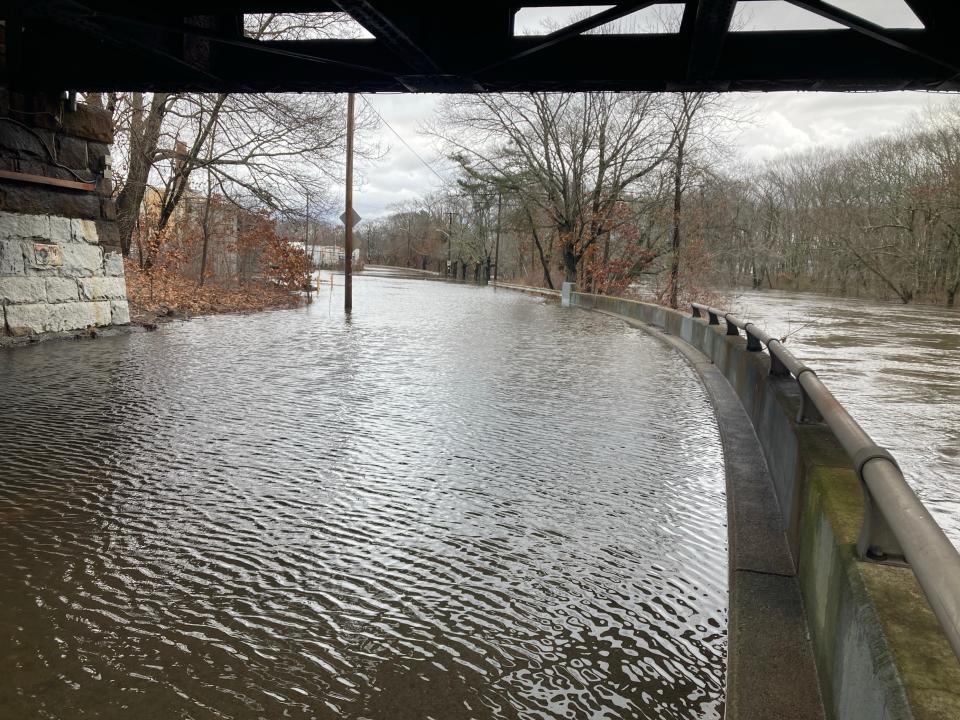20th-century infrastructure not made for 21st-century climate | Opinion
Curt Spalding, a senior consultant with GZA GeoEnvironmental Inc. in Providence, is a former U.S. Environmental Protection Agency New England regional administrator and former executive director of Save The Bay.
Noted climate scientist Kate Marvel called 2023 the year of “climate reckoning.” Drought-driven Quebec wildfire smoke damaged public health in Rhode Island and across the Northeast. Higher ocean temperatures fueled rainstorms that made flooding a menace for hundreds of New England communities.
The menace is only continuing in 2024. Repeated coastal and river flooding in January severely damaged homes and infrastructure in Providence, Cumberland, Johnston, West Warwick, and many other Rhode Island communities. Up the coast in New Hampshire and Maine, tidal communities have been repeatedly walloped by flooding, particularly during astronomical high tides.
More: Experts warn of a 'potentially explosive' hurricane season in the Atlantic
The El Niño cycle in the Pacific Ocean is undoubtedly a driver of these storms. Also driving their historic scale and intensity is an unprecedented increase in Atlantic Ocean temperature, accelerating sea level rise and fueling storms with more moisture and energy.
Since 1955, oceans have absorbed 90 percent of the heat from fossil fuel burning — equal to, in NASA’s words, “five atom bombs per second, 24 hours a day, every day of the year.” As the Intergovernmental Panel on Climate Change has warned, long-term ocean warming will drive the flooding menace for decades to come, until the global warming process is arrested and our planet is allowed to rebalance and stabilize.
With infrastructure built for a 20th-century climate and decades of subsidized development in high-hazard areas, our cities and towns are unprepared for this challenge. As First Street Foundation research suggests, the property tax system that most New England communities depend on to sustain vital local services — and build resilience — will be challenged as more properties face devaluation because of flood risks.

Rhode Island’s neighbors offer us lessons for enhancing resilience. Massachusetts has pushed for “climate vulnerability assessments” in all cities and towns, accompanied by support, tools and resources from Resilient Massachusetts, a state program. The Connecticut Institute for Resilience and Climate Adaptation has deployed Superstorm Sandy relief, and the state has committed substantial funding, by executive order and legislation, for extensive local coastal and inland resilience planning.
Rhode Island’s program is a limited facsimile of the Massachusetts framework, without state funding for resilience planning or a substantial program office. Instead, Rhode Island has used Federal Emergency Management Agency dollars and a partnership with The Nature Conservancy to support one-day local workshops. Communities completing workshops qualify for resilience project implementation grants from the Rhode Island Infrastructure Bank.
The Infrastructure Investment and Jobs Act, also called Bipartisan Infrastructure Law, and the Inflation Reduction Act are providing unprecedented levels of federal funding for states to increase the scope and scale of climate adaptation work that aligns with environmental justice and other federal priorities.
More: In Warren, a dam comes down to restore a river. How that helps wildlife and reduces flooding
To secure a thriving future, Rhode Island and New England communities will have to imagine and build infrastructure that can manage much greater amounts of rainfall and intense storms:
Parts of coastal communities will need to pull back from the ocean, estuaries and tidal rivers as waters expand and rise.
Wastewater treatment facilities built in floodplains to use gravity to collect wastewater may need to be replaced with decentralized, more sustainable systems that recover water, nutrients, and heat.
Vulnerable railways and highways will need to be replaced with more resilient options that can also be cleaner, faster and more accessible.
And natural systems of all kinds will need to be restored and conserved to enhance ecosystem resilience and support human physical and mental health.
Essentially, much of what we built in the 20th century will need to be redone with an eye towards the future. It will take extraordinary civic and government leadership to embrace the powerful promise of building a climate-ready world. The generations that will live through the decades ahead are like the space travelers on Apollo 13: For us, as for them, “Failure is not an option.”
This article originally appeared on The Providence Journal: To secure a thriving future, R.I. will have to build infrastructure that can manage much greater amounts of rainfall and intense storms.

